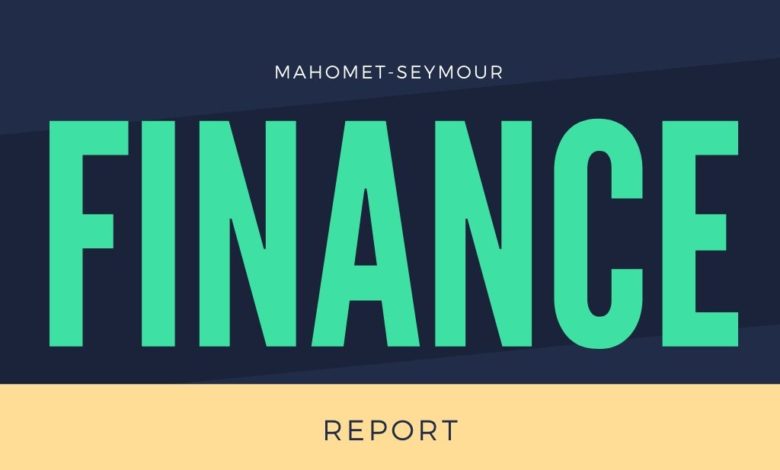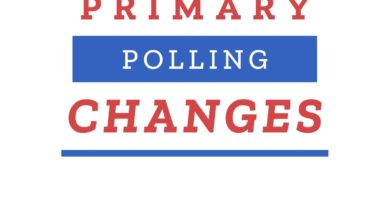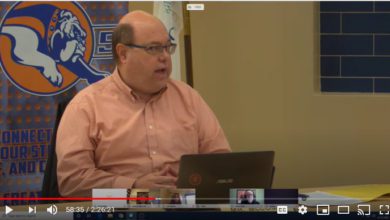Nuxoll explains preliminary ISBE Financial Rating

BY DANI TIETZ
dani@mahometnews.com
The Mahomet-Seymour School District received a preliminary score of 2.55 on its ISBE Financial Report, putting it in the “Financial Watch” category, the lowest category designated by the ISBE.
District Chief School Business Official Trent Nuxoll, who has resigned from his position in the Mahomet-Seymour School District to take a job at Edward Jones, talked about how the district has sent comments back to ISBE to help them understand the district’s financial position at the Feb. 18 Mahomet-Seymour Board Meeting.
In 2019 and 2018, the Mahomet-Seymour School District fell into the “Early Warning” category.
Only 12 school districts of the 852 that reported were in the “Watch” category in 2019.
In the 17th year of the report, ISBE looks at each district’s fund balance to revenue ratio, expenditure to revenue ratio, days of cash on hand, percent of short-term borrowing ability remaining and percent of long-term debt margin remaining.
Nuxoll said that with additional comments, he believes the score should be adjusted, to 3, “Early Financial Warning.” The final report should be available to the public in upcoming weeks.
At Early Warning or Financial Watch, Mahomet-Seymour will continue to be monitored by ISBE and offered proactive technical assistance including, but not limited to, financial projections, cash flow analysis, budgeting, personnel inventories and enrollment projections.
Districts in these categories will also be reviewed to determine whether they meet criteria set forth in Article 1A-8 of the School Code to be certified in financial difficulty and qualify for a Financial Oversight Panel.
Nuxoll said that 2019 fiscal year required “quite a few comments” to ISBE, as he tried to explain the situation about the district not receiving categorical payments for Champaign County property taxes at the appropriate time.
According to Nuxoll, the comment section is to explain “extenuating circumstances that are outside of the administration’s control with regard to revenue sources.”
Nuxoll’s report showed that by the end of June 2019, operating funds were at $2,971,368 and the total revenue as $23,204,666. Nuxoll said that if the district had received the county’s payments within the fiscal year, the ratio would have gone from 13-percent to 23-percent, taking the district from a category 4 ranking to a category 3 ranking.
He also argued that the expenditures to revenue ratio would have been different if the county property tax money was received on time.
Total expenditures came to $26,650,322 while revenue was at $23,204,666. The additional $3,181,436 would have landed the district at $26,386,102, closer to being even. Nuxoll said the district spent $1.01 for every $1.00 it receives.
The district operates on $47,029 per day, according to its audit last year.
While days of cash on hand was also affected by the late county payment, Nuxoll said that he believes ISBE’s suggestion of 180 days of cash on hand is too much. Nuxoll said that the district operates with the goal of 90 days of cash on hand.
With property tax payments, the district would have been at 83.12 days of cash on hand. The late payments took them to 40.15 days of cash on hand.
“In my own personal opinion, I think that’s too high,” Nuxoll said. “I think that’s not being as responsible to taxpayers as we should be. We’ve hovered around 90 days and we’ve kind of targeted that. We have not stockpiled cash; we typically like to add staff instead.
“We have class sizes that we like to decrease, when we can.”
In 2017-18, the district added a school psychologist and kindergarten, fifth-grade and a special education teacher. In 2018-19 they added two fourth-grade teachers, a kindergarten teacher and two instructional coaches. In 2019-20 they added a kindergarten, first-grade and health and wellness teacher at Middletown Prairie and a Mahomet-Seymour High School guidance counselor.
Those additions cost the district close to $850,000, according to Nuxoll.
“While continuing to invest in the 1-to-1 initiative,” he said. “That’s something we should all be pretty proud of.”
The board voted to allow tax anticipation warrants last summer, in the event that the district could not make payroll while they waited for county payments. Money from the county did come in, and the district did not have to do that, so the district did not have to take out short-term bonds.
Their long-term debt margin has been an issue in recent years, though.
At the beginning of the fiscal year 2019, the district had $34,432,715 in outstanding debt. The total allowed for the district is $53,165,430, putting the district into category 2, and bringing down the overall score. With payments from the county, the district would have been at 50.92-percent debt, just barely putting them into the category 3 for percentage of long-term debt.
Nuxoll said that the long-term debt ISBE takes into account is not a fair measure because 30 ILC 350/15 states, “Alternate revenue source bonds shall not be regarded or included in any computation of indebtedness for the purpose of any statutory provision or limitation.”
The district believes that the bonds they take against the 1-percent sales tax should not be included in the debt calculation.
With Nuxoll’s explanations, he believes that the district’s score should be a 3, which will put them back in the Early Warning category.
“Those top three factors could be higher, and are higher in other districts,” Nuxoll said.
He continued on to explain that the district’s tax rate is one of the lowest in the county, and he believes that also leaves the district underfunded.
Nuxoll said with the state’s evidence-based funding model, the district is starting to see a consistent stream of state funding, but he believes they are also under-funded from the state, as well.
“The score doesn’t look great, but I’ll never make recommendations to improve a score at the expense of adding staff,” he said.
He said that if he were staying with the district, he wouldn’t act on trying to improve the score.
“The state was put to task of putting some sort of financial model together to be able to compare one to the next and there’s plenty of reasons that there’s too many caveats,” Nuxoll said.
Board member Meghan Hennesy asked if with late payments from the state and the county over a long period of time, the district should re-evaluate the days of cash on hand.
“We’re kind of between a rock and a hard place, are we not if we don’t make some sort of adjustment and we run into the same delays as we ran into this year?” Hennesy asked.
“What adjustments can we make in the meantime to prepare for three months from now when they likely won’t make that first payment?” Nuxoll asked.
“That’s what I’m thinking,” Hennesy said.
“Three months, I don’t have any magic answer for you there,” Nuxoll said. “I mean we can just freeze all the budgets, I suppose. Eighty-percent of our budget is staff, and we’re not going to freeze payments.”
“Obviously,” Hennesy said.
“It would be a radical action to try to affect that now,” Nuxoll continued.
Schultz said that in an emergency, the district could take out tax anticipation warrants like they planned last summer.
Board member Lori Larson said that the board has ridden the wave of late or delayed payments before.
While the public ISBE Financial Profile has not been released, Prairieview-Ogden School District, also in Champaign County, announced that they are in the highest-profile category, Recognition, at their board meeting on Feb. 10.





